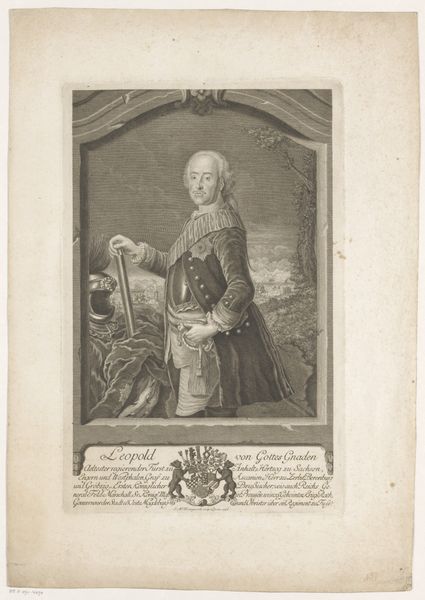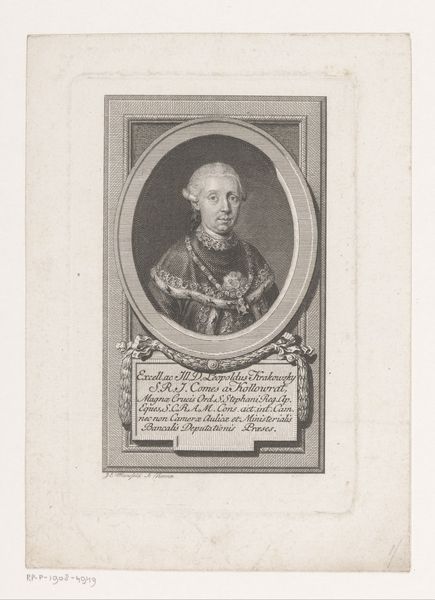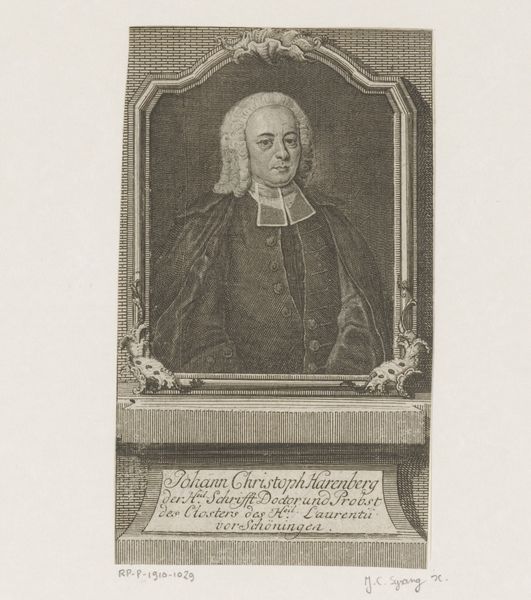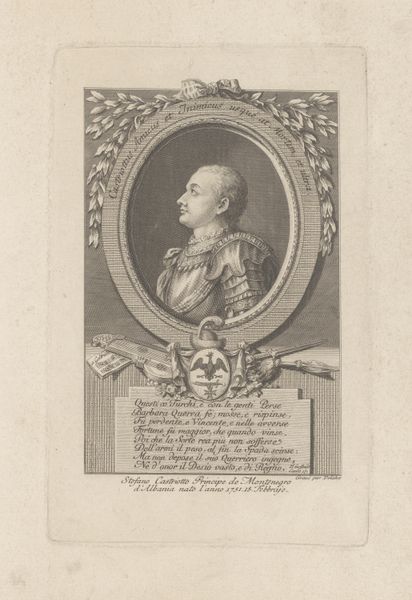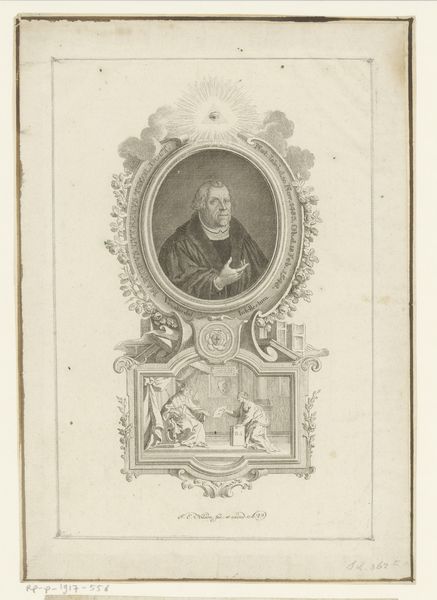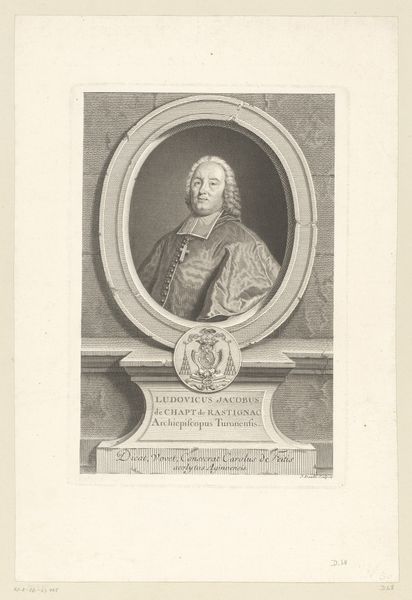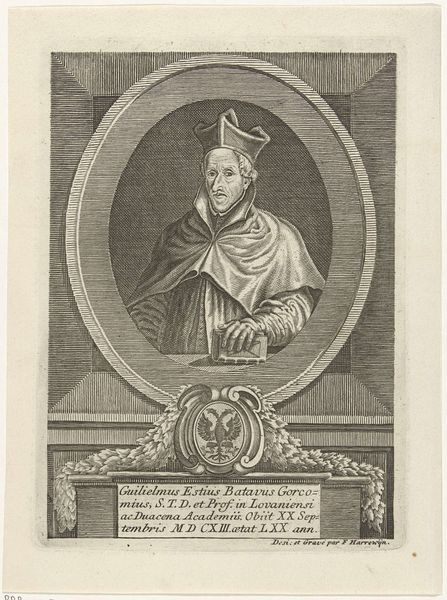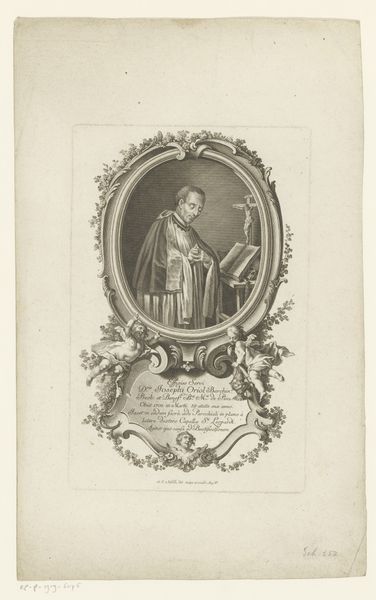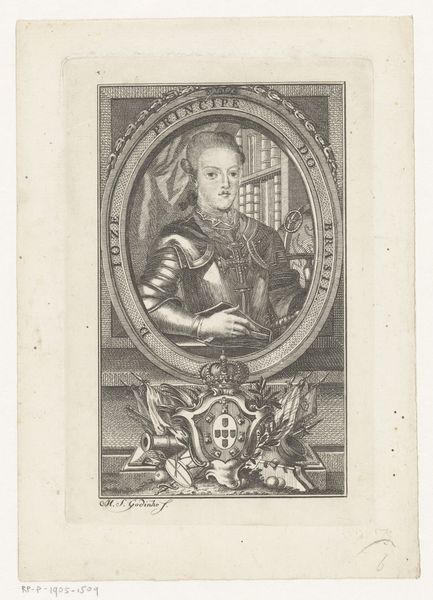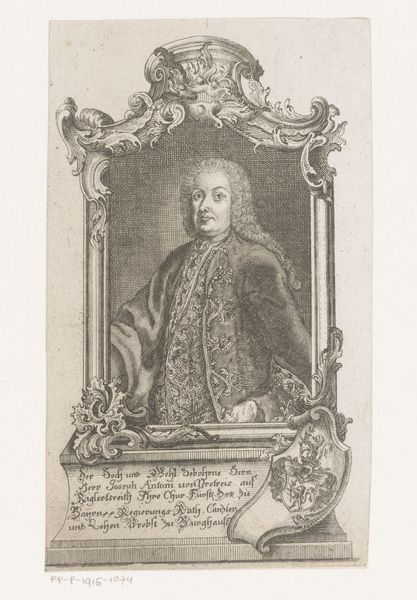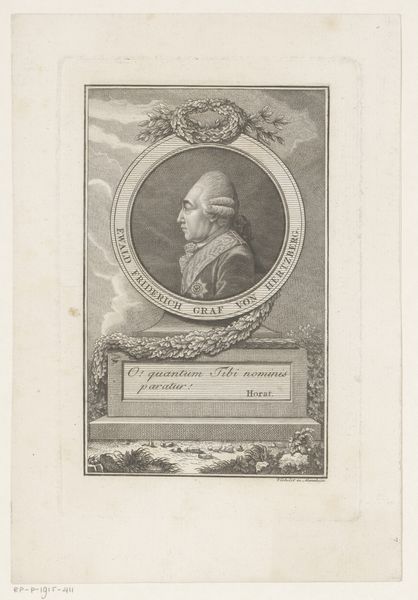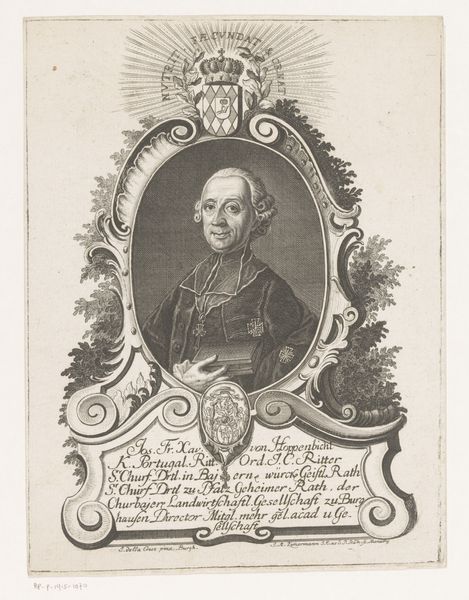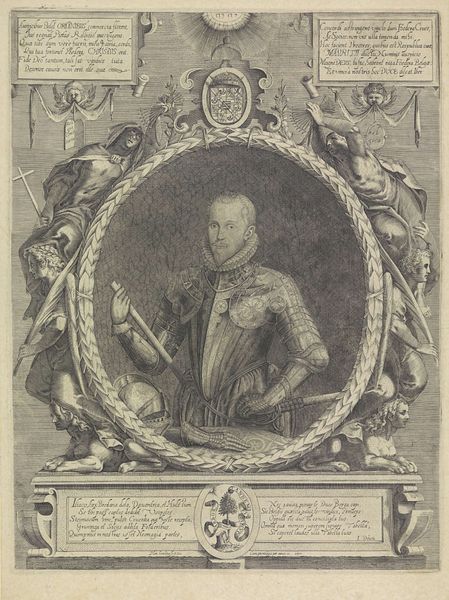
Portret van Leopold Maximilian von Anhalt-Dessau 1743
0:00
0:00
johannchristiangottfriedfritzsch
Rijksmuseum
print, engraving
#
portrait
#
baroque
# print
#
old engraving style
#
19th century
#
watercolour illustration
#
history-painting
#
engraving
Dimensions: height 306 mm, width 175 mm
Copyright: Rijks Museum: Open Domain
Curator: It’s a strikingly formal portrait. There’s something almost austere about the sitter despite the decorative frame around him. Editor: Precisely the feel I get. In the Rijksmuseum collection, this 1743 engraving presents Leopold Maximilian von Anhalt-Dessau by Johann Christian Gottfried Fritzsch. Its stark lines seem appropriate to the rigid military persona, wouldn't you agree? Curator: Absolutely. The armour, the battlefield visible through the archway... it all speaks to a life defined by duty and conflict. Notice how the engraver captured every minute detail of the armor—it symbolizes so much about societal power dynamics and aristocratic expectations in 18th-century Europe. Editor: True, this is very typical baroque portraiture designed to evoke authority, but consider the print medium itself. By being an engraving, this image could be replicated. This helped circulate a very particular vision of Leopold – he wasn't simply a noble, but a symbol intended for broader consumption. These kinds of visual strategies solidify their rule and cement the legacy for public history. Curator: Yes, and look at how Leopold holds that baton. A symbol of leadership but also, potentially, control—control over himself, over his image, and certainly over the lives under his command. These types of images of batons or weaponry consistently serve as tools of empowerment. Editor: Indeed. While we see Leopold as an individual, the print underscores that his importance is derived from this constructed public image, mediated through visual tools and available for a wider audience. Curator: Looking closer, that frame becomes a sort of proscenium, positioning him for the historical stage. Even that brief description inscribed below his image cements his identity. I notice also that the background battlescape serves as a secondary level, a persistent reminder of Leopold's military identity behind him. Editor: So, the symbolic language of duty is reinforced both overtly and subliminally. Each element seems painstakingly positioned. This isn’t only about a man; it's about an office. Curator: And about imprinting a cultural memory... a visual story told through lines and shading, etched into collective understanding. It makes me contemplate what traces such a rigid depiction leaves on our own understanding of leadership even today. Editor: Thinking about Fritzsch's artistry coupled with the socio-political motivations really unlocks deeper questions. What is he really representing: the man, or his constructed authority? It is a question to continue turning over.
Comments
No comments
Be the first to comment and join the conversation on the ultimate creative platform.
